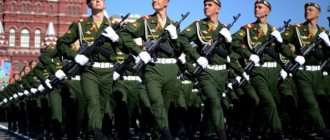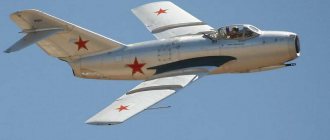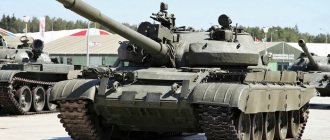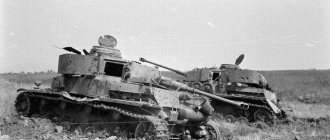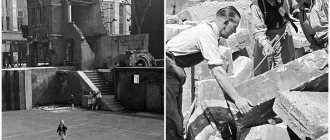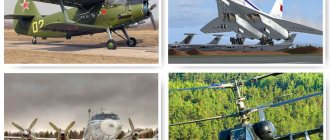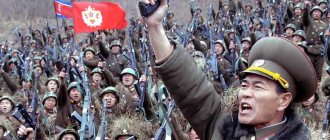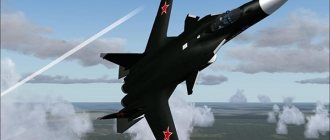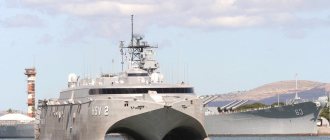DPRK Air Force North Korea photo
DPRK Air Force North Korea photo , the Democratic People's Republic is one of the most secretive states in the world. Even in the era of dominance of satellite reconnaissance means, their composition and organization are far from completely known.
DPRK Air Force flag (left) and Democratic People's Republic of Korea Air Force emblem (right)
The date of creation of the DPRK Air Force is considered to be August 20, 1947. By mid-1950, they included one mixed air division (57th attack air regiment - 93 Il-10, 56th fighter - 79 Yak-9, 58th training - 67 training and communications aircraft) and two airfield technical battalions . In the first days of the war on the Korean Peninsula, the DPRK Air Force acted quite actively, but very soon suffered heavy losses. By August 21, 1950, only 20 serviceable fighters and one attack aircraft remained in service. In the winter of 1950-1951, only light night bombers Po-2, Yak-11 and Yak-18 operated from the air force at the front. At the same time, within the framework of the United (Chinese-Korean) Air Army (UAA), North Korean aviation was being re-established on the territory of the PRC. By mid-1951, it had 156 aircraft and 60 trained pilots. The arrival of MiG-15 jet fighters began, which gradually became the main type of combat aircraft of the North Korean Air Force. During the Korean War, North Korean pilots recorded 164 official air victories .
The leader of North Korea, has the military rank of marshal, Kim Jong-un photo with employees of the 1st Guards Air Force and Air Defense Division
Despite having a fairly developed military industry (including missiles), the Democratic People's Republic of Korea does not produce its own aircraft. In subsequent decades, the DPRK Air Force developed on the basis of supplies of Soviet aircraft. Airplanes also arrived from China. To date, North Korea's air force numbers (according to various sources) from 1,100 to 1,500 and even (according to various sources) 1,700 aircraft and helicopters. The number of personnel reaches 110 thousand people. The structure and locations of air units are not completely known.
Air Force bases of the DPRK (North Korea), far from complete data
The most numerous branch of combat aircraft of the DPRK Air Force is fighter aircraft. The most modern aircraft in its composition are the MiG-29, delivered from the USSR at the turn of the 80s and 90s of the last century. Vehicles of this type are in service with the 57th Fighter Aviation Regiment, stationed in Onchon and included in the air defense system of the DPRK capital Pyongyang.
The MiG-29 fighter is in service with North Korea, judging by the photo, the state of the fleet is deplorable, the plane is painted with paint reminiscent of oil, and this is one of the government’s propaganda, after all, the leader is present in the photo
The 60th Air Regiment (Pukchang) serves MiG-23ML fighters. The most popular type of fighter is the MiG-21 - the DPRK Air Force has about 200 of these aircraft of several modifications, including Chinese copies of the “twenty-first” (J-7). They are armed with the 56th IAP in Hwangju, the regiment in Toksan and a number of other units. Finally, there are approximately a hundred extremely outdated J-6 and J-5 aircraft in service (Chinese “clones” of the Soviet MiG-19 and MiG-17F, respectively), completely unsuitable for air combat in modern conditions.
MiG-19 of the DPRK Air Force at the air base of South Korea (relations between the two neighboring states are very tense), in fact, a Chinese-made aircraft making exact copies of our MIGs
In the photo - J-6, hijacked on May 23, 1996 by Captain Lee Chol Soo to South Korea, see photo above - this is the same plane. There are about a hundred extremely outdated J-6s and J-5s in service.
Aircraft and helicopter fleet of the DPRK Air Force (approximate data)
fighters North Korea photo
- MiG-29/29UB - quantity 35/5
- MiG-23ML - 56 pcs.
- MiG-21 PFM/bis/UM - 150
- J-7 - 40
- J-6 - 98
- J-5-approx. 100
MiG-21 is the most popular fighter of the DPRK Air Force, about 200 are in service
North Korean Air Force Bombers
- N-5-80
Fighter-bombers, attack aircraft North Korea photo
- Su-7BMK -18 Su-25K/UBK - 32/4
Transport aircraft , Il-76-3 pieces, Il-62 - 2, An-24 - 6, An-2 - about 300 Training, DPRK Air Force North Korea photo
- CJ-6-180
- JJ-5-135
- L-39C-12
Korean Air Force helicopters
- Mi-26-4
- Mi-8-15
- Mi-2-ok. 140
- Z-5 - approx. 40
- MD 500 - approx. 90
Also outdated is the bomber force, which numbers approximately 80 N-5 aircraft - Chinese copies of the Soviet Il-28 front-line bombers, dating back to mid-20th century technology. They staffed the regiments in Orang and Uizhu. According to Western sources, no more than half of all N-5s are in flight condition. Probably, approximately the same percentage of combat readiness is in other types of aviation. Fighter-bomber and attack aircraft are concentrated in the 55th Air Regiment, stationed in Sunchon. It consists of about two dozen obsolete Su-7BMKs and approximately twice as many relatively modern Su-25s. Auxiliary aviation The basis of military transport aviation is a large number (about 300) of light single-engine An-2. Carrying out routine transportation in peacetime, in wartime they are supposed to be used for landing reconnaissance and sabotage groups behind enemy lines. There are only a few heavier aircraft (for example, An-24 or Il-7b) in the Air Force. The situation is somewhat improved by the use of air for military transport - formally civilian, but actually part of the Air Force. 1996 Training aviation is represented by approximately three hundred Chinese-made G-6 (a copy of the Yak-18) and JJ-5 (a two-seat version of the J-5) aircraft, as well as a dozen Czechoslovakian L-39Cs. Flight training is carried out at several air bases concentrated in the northeastern part of the country. North Korea's helicopter fleet is dominated by light aircraft. Among them, American-made MD 500 helicopters, purchased in Germany as civilian ones, and already in North Korea armed with the Malyutka ATGM, stand out.
MD 500 Helicopters Inc purchased from Germany, later they were armed with the Malyutka ATGM
North Korean air defense systems
S-200 on a launcher in a museum in Hungary
The DPRK has a very powerful and deeply echeloned (albeit obsolete) air defense system. In particular, there is:
- 24 PU long-range air defense systems S-200,
- 240 medium-range complexes S-75 and 128 - S-125.
- Military air defense is represented by the Krug, Kub air defense systems, Strela and Igla MANPADS. And the anti-aircraft artillery fleet is measured in an astronomical figure - 11 thousand anti-aircraft guns!
Flight 2: A roaring 200-ton monster
“During our return to the capital, we had to fly on an even more unusual plane. It was neither a civilian nor a military aircraft - it was an Il-76 cargo ship, one of the last Soviet cargo aircraft, produced in 1990. Nowadays, most aviation enthusiasts can only dream of flying on one of these. We heard the noisy D-30 engines on the ramp - the turbines were literally roaring, and the vibration was transmitted to our skeletons. Inside, the plane had long benches along the fuselage; it was assumed that passengers would lean directly on the walls of the cabin. The four engines began to operate at full power and the plane took off. It's difficult to say where exactly we were flying - the windows on the plane were very small. The cabin smelled of an old engine and dirty tools. “The IL-76 is not designed for passengers,” Kennedy said. - “This noise is not for human senses.” Kennedy compared flying on the Il-76 to the noise in the subway, “but as if you were on the outside of the car.” The engines fell silent only when the 200-ton monster touched the ground, and for all of us it was a real deliverance.”
Flight 5: one of the most successful Soviet aircraft of its time
0
Source:
“A new day and a new flight - this time on one of the best Soviet aircraft. The An-24 is one of the best creations of its designer: in total, just over 600 of these aircraft were produced, and they were created to operate in the most difficult conditions, such as ice and mud. “A real workhorse,” Kennedy said as we walked to the back of the plane. “Comfortable, simple, reliable, can land and land anywhere, and at the same time passengers are comfortable in it.” The 50-year-old aircraft was in excellent condition at the time of the flight. Its wooden superstructures and folding doors are a legacy of the Soviet era. During the flight, the windows were completely covered with blue curtains, contrasting with the white interior. The plane pleasantly surprised everyone with how quietly and stably its engines operated. The takeoff was unusually quiet, and for a Soviet aircraft the An-24 handled clouds and turbulence very well.”
Flight 6: Former North Korean Air Force aircraft?
0
Source:
“Perhaps, flying on this plane is what all aviation enthusiasts are looking for. IL-18 is one of the real “pearls” of North Korea. It was she who allowed North Korean airlines to open a direct route to Moscow. This is the last Il-18 used for commercial purposes anywhere in the world. When our group disembarked from the bus in front of the magnificent Il-18 with its blue propellers and impeccably polished fuselage, we could not help but applaud. This plane was the reason for many of us to come. One of the guides told us that this plane was a personal gift to Kim Il Sung himself. Today it is used for regular flights. The IL-18 has a fairly comfortable and spacious interior. The most attractive part about it was of course its blue propellers, which were incredibly quiet and stable. “A graceful bird that doesn’t do anything in a hurry,” Kennedy said.”
MiG-19: improved models of the MiG-15 and its analogue MiG-17
The MiG-19 was designed to correct the shortcomings of the MiG-15 model and its analogue, the MiG-17. Despite the decent power of both fighters compared to their contemporaries, they experienced handling problems when approaching the sound barrier.
Stay up to date with events with the Quick Focus telegram channel.
Subscribe
Focus translated a text by Caleb Larson about a fighter that is already 70 years old, but still in service.
The MiG-19 was supposed to cope better with supersonic speeds and achieve a longer flight range than the MiG-15 and MiG-17. US Air Force reports noted that it was " the first Soviet production fighter capable of supersonic speed in cruising flight ."
The MiG-19 twin-engine airframe was equipped with new engines. Together they created approximately twice the thrust of the MiG-17.
The MiG-19's four hardpoints could accommodate ammunition or fuel tanks. However, two of the four units were intended only for fuel tanks, which limited the firepower of the MiG-19.
MiG-19 diagram
The fighter compensated for the lack of bombs and missiles with three 30-mm automatic cannons. These guns were intended to provide superiority over American supersonic fighters and bombers such as the Vietnam War-era F-4 Phantom.
American designers assumed that at speeds above Mach 1, classic World War II-style skirmishes and machine-gun battles would become irrelevant. What the engineers and designers didn't anticipate were the moments in flight after fast maneuvers when airspeed drops. If guns were installed on fighters, they usually used less powerful 23-mm versions.
Important
Combat Museum. Tanks and aircraft of the USSR are still in service with the DPRK army
The heavy American F-4s, like most Vietnam-era American aircraft, lacked sufficient maneuverability at low speeds. It was at such moments of air battles that the relatively slow, but more maneuverable MiG-15, 17 and 19 bypassed their American opponents, neutralizing them with powerful and armor-piercing incendiary shells.
Flight 4: anger the authorities
“The next flight awaited us on one of the newest aircraft of the DPRK - An-148 from 2015. This Ukrainian aircraft was manufactured in accordance with Western requirements and can accommodate up to 85 passengers. LED lights, screens, comfortable seats - all this gave a feeling of real Western comfort. The flight was smooth and the engines were quiet enough to say they were up to modern standards. However, thanks to the North Korean authorities, my personal flight was not very pleasant. I attached my GoPro camera to the window and began filming the flight when a North Korean guide jumped up to me and shouted, “It’s GPS!” He demanded to see all the videos and photos I took. Luckily, one of the worst moments of my life ended with just shaking and a headache.”
